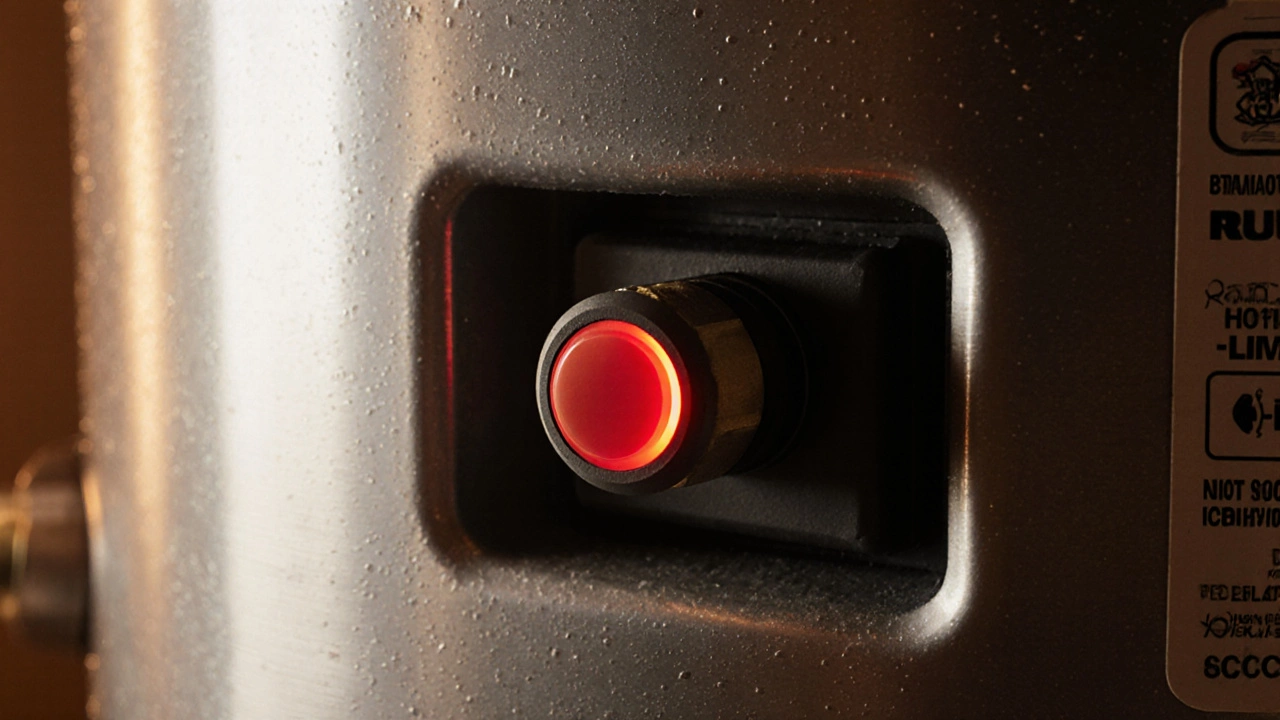When dealing with a Water Heater Reset Button, a safety feature on most residential water heaters that allows you to clear error codes and restart the heating cycle. Also known as reset button, it plays a key role in restoring hot water after a fault.
Understanding the water heater, the appliance that stores and heats water for domestic use helps you see why the button matters. The heater’s thermostat monitors temperature, and when it detects overheating, it trips the reset button to protect the unit. That safety link means water heater reset button resets the thermostat, preventing damage and reducing fire risk.
Several conditions can cause the reset button to click off. A clogged burner, a broken thermostat, or a failing anode rod can all raise the water temperature beyond safe limits. The thermostat, the sensor that tells the heater when to turn on and off is the first line of defense; if it malfunctions, the heater may overheat and the button trips. Likewise, a corroded anode rod, a sacrificial metal rod that protects the tank from rust can cause sediment buildup, narrowing water flow and forcing the system to work harder.
Each of these components connects to the reset button in a cause‑and‑effect chain: sediment → harder heating → thermostat over‑reach → reset button trips. Recognizing this link lets you diagnose the real issue instead of just pressing the button over and over.
Most homeowners treat the reset button as a magic fix, but it’s really a diagnostic cue. When it pops, you should check the burner for clogs, test the thermostat with a multimeter, and inspect the anode rod for corrosion. If any part shows wear, replace it before the button trips again.
Regular maintenance can keep the reset button from becoming a nuisance. Flushing the tank once a year removes sediment that would otherwise jam the burner and overheat the water. A simple flush also extends the life of the anode rod, reducing the chance of corrosion‑related trips.
When you press the reset button, you’re essentially telling the heater, “Okay, I’ve cleared the error, try again.” The heater then re‑evaluates the thermostat reading. If the underlying problem persists, the button will pop a second time, giving you a clear sign that professional help is needed.
DIY checks are quick and inexpensive. First, turn off power or gas, then locate the button—usually a red disc near the thermostat. Press it firmly; you’ll hear a click if the circuit was open. Next, look for any obvious signs of a burnt burner or loose wiring. If everything looks tidy, restore power and watch the tank heat for a few minutes. If the button stays engaged, you’ve likely solved a minor glitch.
However, if the button trips again within minutes, it’s time to dig deeper. A gas‑fired unit might have a clogged vent, while an electric heater could suffer from a failing heating element. Both scenarios cause the thermostat to overheat, and the reset button will keep tripping to protect the system.Professional technicians have the tools to test heating elements, verify gas pressure, and replace worn thermostats. They can also replace the anode rod without draining the entire tank, saving you time and water.
In addition to fixing immediate issues, a pro can advise on optimal flushing schedules based on water hardness in your area. Hard water accelerates sediment buildup, so more frequent flushing may be needed where mineral content is high.
Remember, the reset button is a safety device, not a permanent solution. Treat each trip as a symptom, investigate the cause, and perform the needed maintenance. By doing so, you’ll keep hot water flowing and avoid costly replacements.
Below you’ll find a collection of articles that walk through common water‑heater problems, step‑by‑step DIY fixes, and when to call an expert. From diagnosing a faulty thermostat to replacing an anode rod, these guides give you practical insight to keep your system humming.
Take a look at the posts that follow—you’ll discover quick fixes, thorough maintenance tips, and clear signs that it’s time for professional service. Armed with this knowledge, the next time your reset button pops you’ll know exactly what to do.
Posted by
Orin Trask
0 Comments

Learn when it's safe to press the water heater reset button, step‑by‑step reset procedures for electric and gas units, and key warning signs that require professional help.
read more